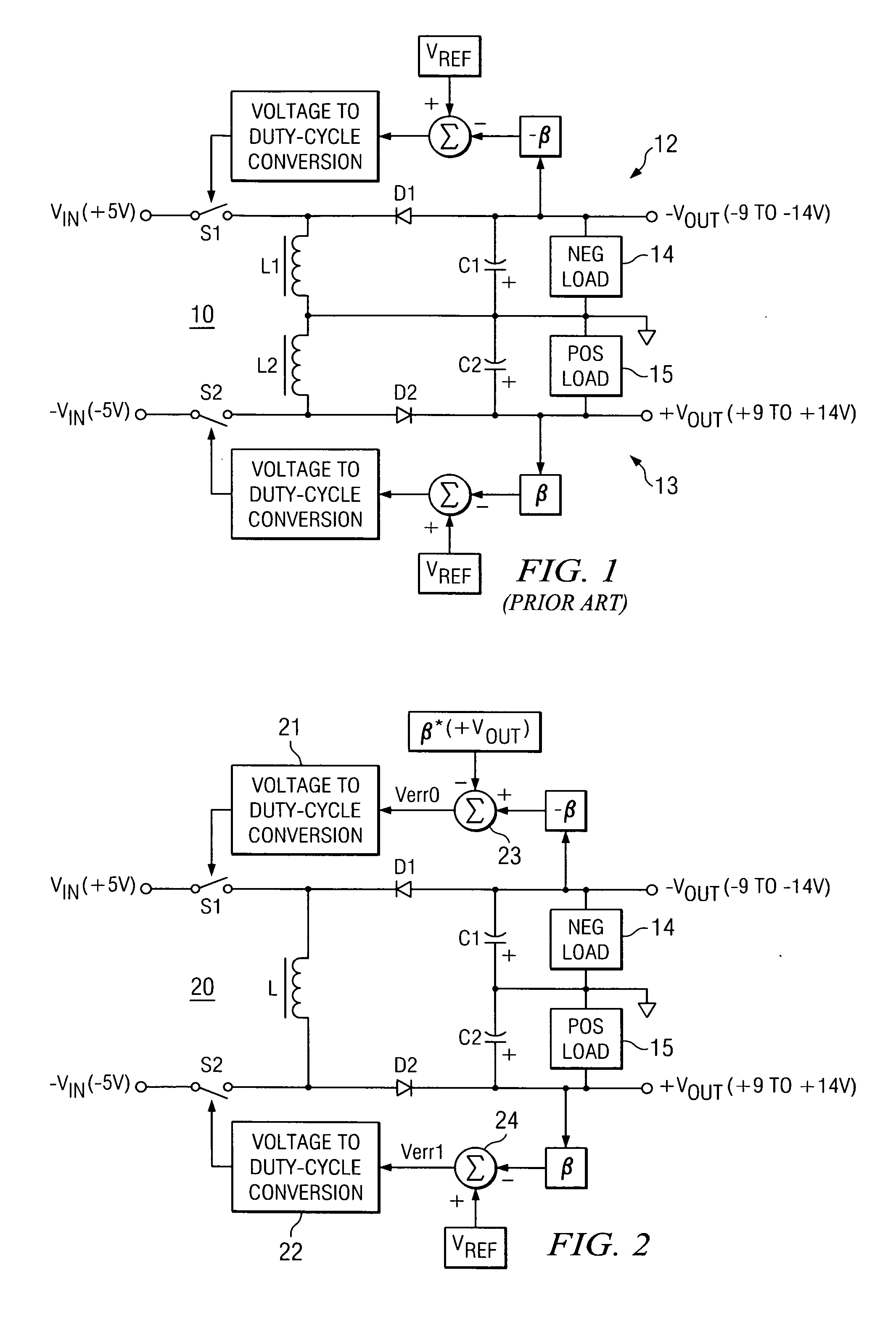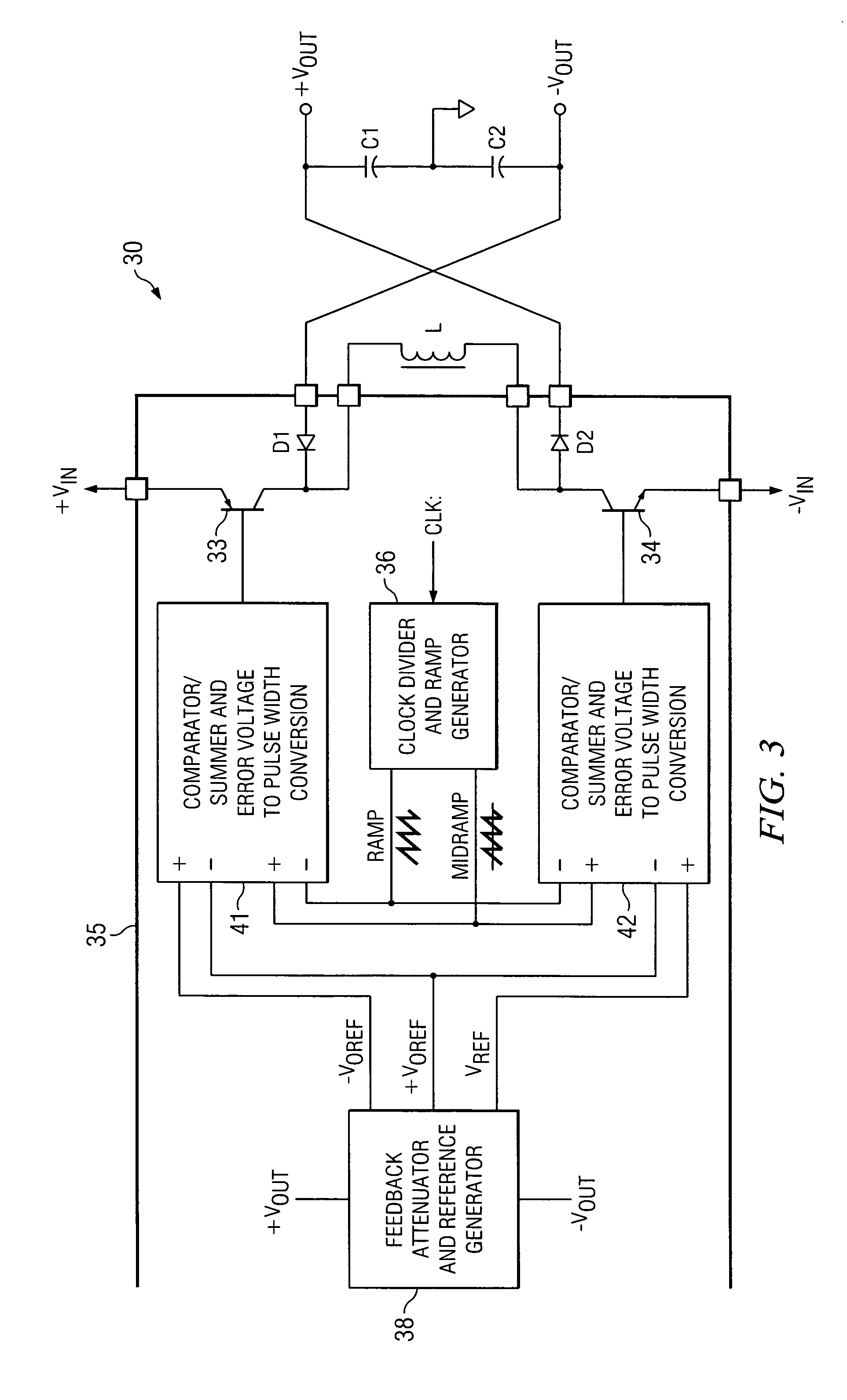Dual buck-boost converter with single inductor
a converter and inductor technology, applied in the field of dual buck-boost converters, can solve the problems of reducing the overall reducing the efficiency of the power converter, and being less efficient in power density and device utilization, so as to increase the pulse width of a single switching operation, reduce the output voltage, and increase the output voltage
- Summary
- Abstract
- Description
- Claims
- Application Information
AI Technical Summary
Benefits of technology
Problems solved by technology
Method used
Image
Examples
Embodiment Construction
[0024] Referring now to FIG. 2, a circuit block diagram of a dual buck-boost converter in accordance with the present invention is illustrated as circuit 20. Circuit 20 includes a single inductor L coupled between switches S1 and S2 that are operable to switch input voltage for the separate inputs. In the embodiment illustrated by circuit 20, switch S switches +5V input into circuit 20 while switch S2 switches −5V input into circuit 20. Switches S1 and S2 are controlled by voltage to duty cycle converters 21 and 22, respectively. Converters 21 and 22 are driven based on an error signal generated by summing junctions 23 and 24, respectively.
[0025] Summing junction 24 operates by subtracting an output feedback value from reference voltage Vref to generate an error voltage Verr1. The output feedback value is determined from output voltage +Vout multiplied by a feedback ratio β. Accordingly, summing junction 24 realizes the error voltage feedback equation
Verr1=Vref−(+Vout*β).
Error vo...
PUM
 Login to View More
Login to View More Abstract
Description
Claims
Application Information
 Login to View More
Login to View More - R&D
- Intellectual Property
- Life Sciences
- Materials
- Tech Scout
- Unparalleled Data Quality
- Higher Quality Content
- 60% Fewer Hallucinations
Browse by: Latest US Patents, China's latest patents, Technical Efficacy Thesaurus, Application Domain, Technology Topic, Popular Technical Reports.
© 2025 PatSnap. All rights reserved.Legal|Privacy policy|Modern Slavery Act Transparency Statement|Sitemap|About US| Contact US: help@patsnap.com



